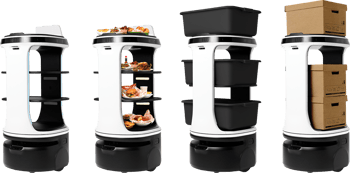Interviewing is an essential component of the hiring process. Even as restaurants gain access to increasingly sophisticated and automated digital recruitment tools, there is no replacement for the interpersonal engagement of a solid job interview. So it’s absolutely critical that you make the most of this opportunity.
In today’s challenging hiring climate, conducting an effective restaurant interview can be a difference-maker for your business. That’s because you aren’t just vetting applicants for your open server positions. You’re also selling your restaurant to the candidates that offer the best fit.
Your interview should be designed to achieve both goals.
“Interviewing is right up there with the restaurant’s reputation and the culture," said Christine DeVita, CEO and co-founder of DeVita and Hancock Hospitality. "You’re the face of the company and the brand at that point, so it’s super important that you bring your A-game as the interviewer.”
6 Restaurant Interview Tips to Optimize Your Hiring Process
So how can you conduct an effective restaurant interview? We've collected restaurant interview tips from experts that strike the perfect balance between vetting candidates and selling your company culture.
1. Be prepared.
“The most important thing is to be prepared and organized,” said DeVita. “A lot of times the GM is just printing the resume as the candidate’s walking in, but you need to look at that resume beforehand, make notes, and add any questions you have.”
The resume also provides an opportunity to conduct a Google-based background check, to contact references, and to highlight some of the candidate’s qualifying job experiences.
You should also arrive at the interview with your presentation and sequence of questions fully prepared. We expect job applicants to show up prepared, and restaurant operators and managers have a responsibility to do the same.
2. Ask open-ended questions.
An effective restaurant interview should give you a strong sense of a candidate’s fit for the role, as well as for your restaurant. DaVita advises building your interview around open-ended questions “to create a discussion that’ll get more out of the candidate.”
Examples of open-ended questions include softball openers like “Why do you want to work here?” and "What are your strongest attributes as a team member?” as well as more nuanced questions like “Can you describe an instance when you resolved a customer service issue?” and “Can you tell me about a time when you clashed with a coworker and how you resolved it?”
If you ask the right questions, your interview process should also contribute to better long-term retention rates.
"I always love to ask what kind of job they’re looking for and what’s important to them," said Charles Wright, director of customer success for restaurant labor management software company 7shifts.
“If you can get to the root of what motivates people,” said Wright, “that's key to keeping people around.”
3. Be consistent.
Create an interview process and stick with it. Write your sequence of questions and create space for open dialogue during the interview process. But don’t alter your line of questions from one candidate to the next.
“This is extremely important,” said DeVita. “If you ask two different sets of questions, you’re not going to be able to gauge and rate the candidates appropriately.”
Your sequence of interview questions should remain constant. The candidates will provide the variables themselves. Of course, your line of questioning will differ from one position to the next. The interview for a server position will likely be a bit different than the process for hiring a head chef.
But as you interview for individual positions, keep your questions constant for every candidate that walks through the door.
4. Showcase your company culture.
Your interview should be more than just a string of questions. You will also be presenting your company to each candidate. Use this opportunity to give candidates a sense of the workplace culture, and clear expectations about what it’s like to be a part of your restaurant’s team.
“You want to describe, what is it like to work in your restaurant? What is your team like?,” said Wright. “When I think about some of the bigger brands where I’ve worked, we had a paper that lays out the total package, and that includes what your pay looks like, what your tips look like, and what you can expect for benefits, including things like whether the restaurant’s paying for your uniform and giving you a discount on slip-resistant shoes.”
This points to another important feature of your presentation of the company. Be clear and specific about compensation, benefits, and perks that come with the job. Identify opportunities for growth. Point to any special leadership, training, or education programs that may be available through your restaurant.
“It’s definitely the applicant’s market,” Wright pointed out.
Keeping that in mind, use the interview process to provide strong candidates with compelling reasons to join your team.
5. Plan to make an offer.
As long as we’re on the topic of strong candidates, you have to be prepared to act fast in today’s challenging labor market. Enter the interview fully prepared to schedule the next steps in the hiring process before a quality candidate walks out the door.
“Don’t be afraid to say, ‘Hey this interview went really well, and I’d like to set you up for the next step right now.’ If they leave your restaurant and someone else calls them, at the very least they already know when they can expect to meet with you again," said Wright. "It’s not as easy to just dismiss your opportunity.”
6. Create interview training materials.
Conducting an effective restaurant interview is a skillset that needs to be learned. An interview guide can be a valuable training tool.
“If you just say, ‘Hey, go do this interview', not only might they miss questions they should be asking, but there might be questions that they shouldn’t be asking, and aside from potentially hiring the wrong person, that could be detrimental to the brand,” said Wright.
A guide helps interviewers better prepare questions, highlight selling points for working at the restaurant, and identify the traits that make a suitable candidate for hire. This is a good way to streamline and refine your interview process.
Enhancing the Interview Process: Advanced Staffing Solutions
There’s a lot riding on your hiring process. From the money you’ve invested in job advertising and recruitment to the time spent reviewing applications and checking references, hiring can consume a lot of resources. And this is to say nothing of the impact your hiring process can have on workplace culture—for better or worse.
This is why it’s so important to conduct an effective restaurant interview. Fortunately, you don’t have to do it alone. You can enlist the services of a leading edge staffing vendor for everything from sourcing and vetting candidates to conducting interviews and even training new hires. Find out what a third-party staffing provider can do to enhance your interview process and strengthen your in-house team.





